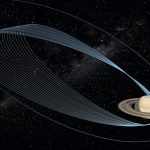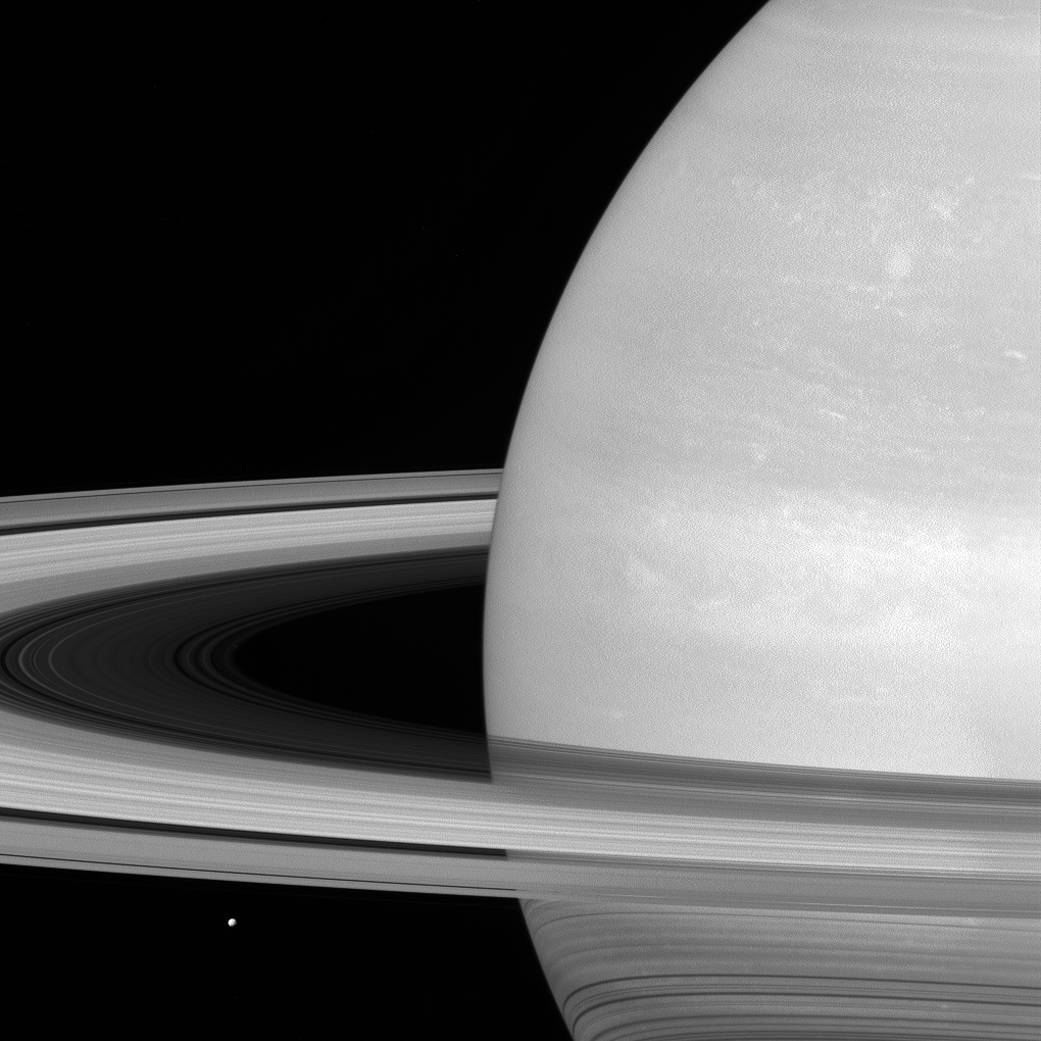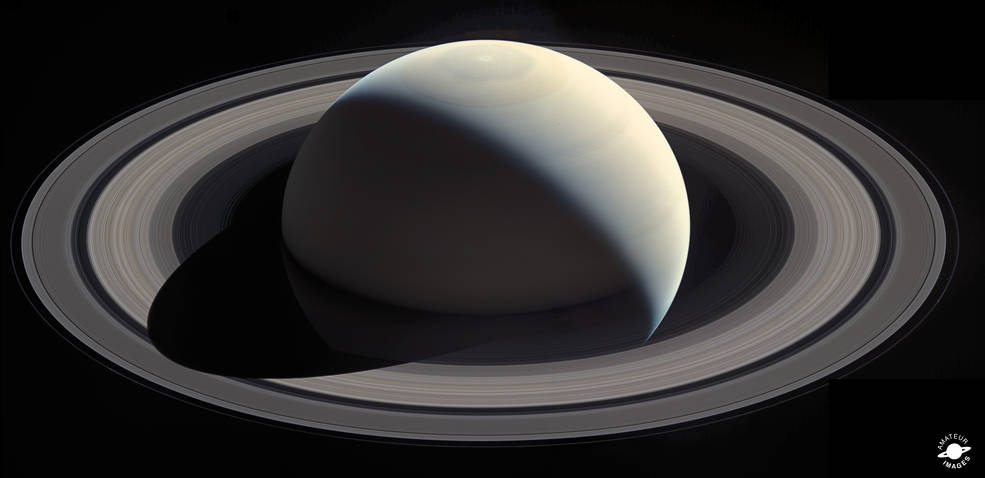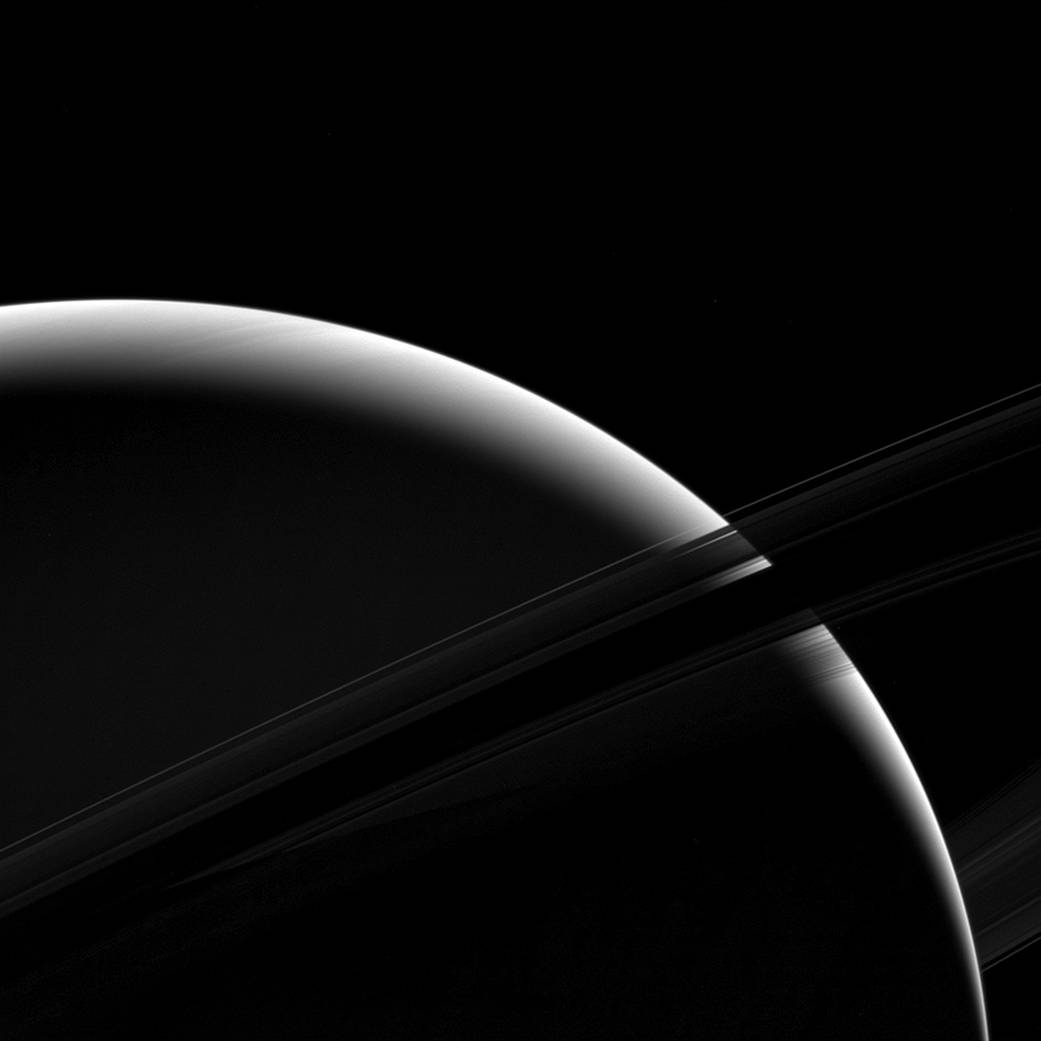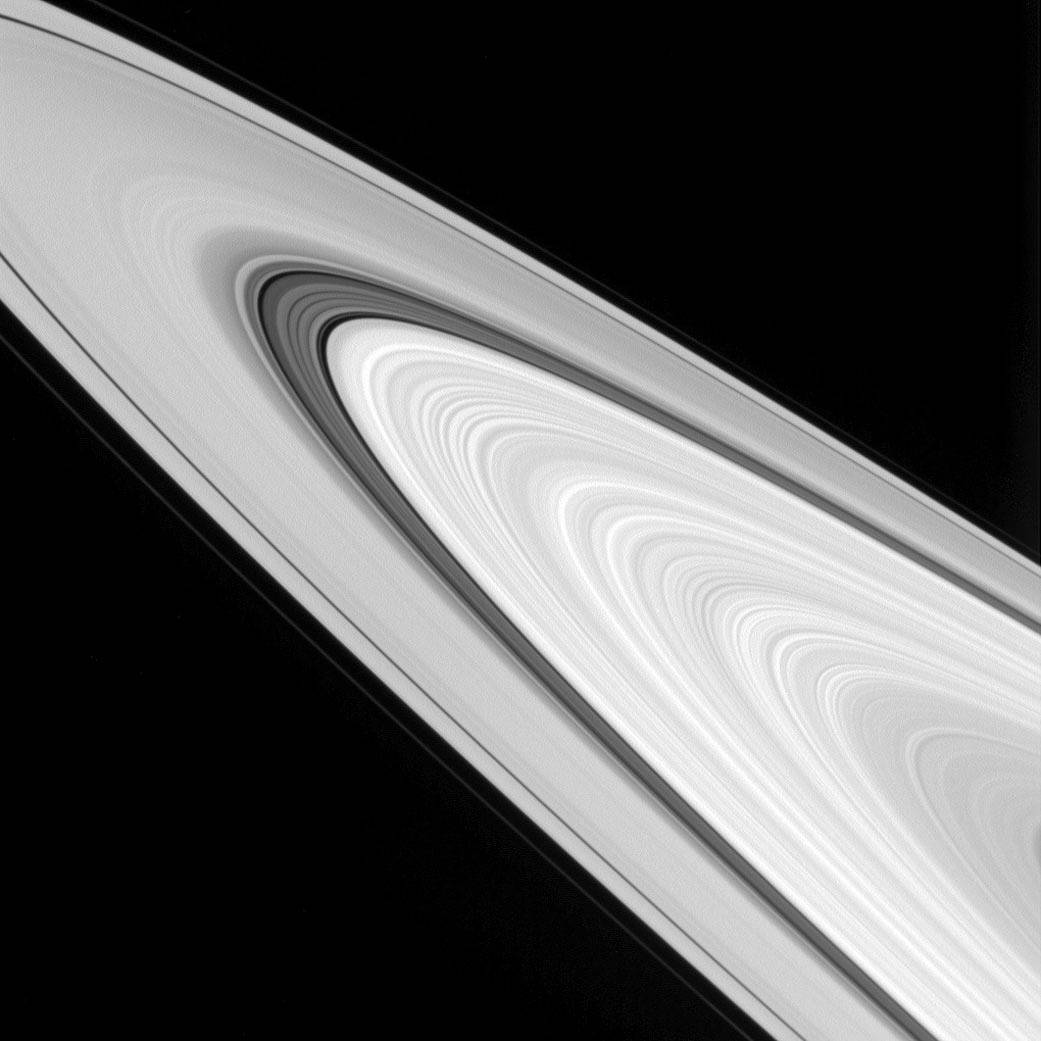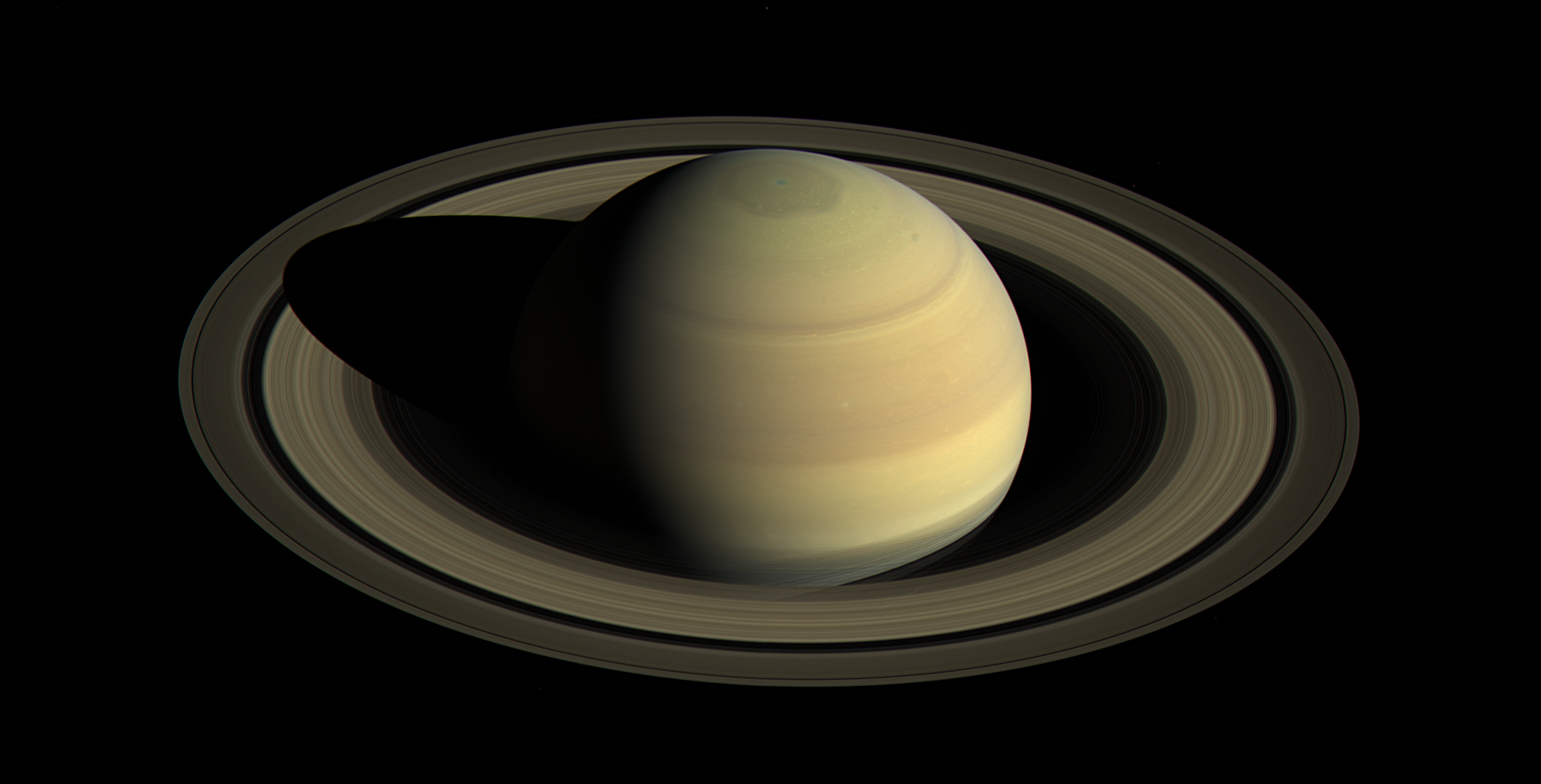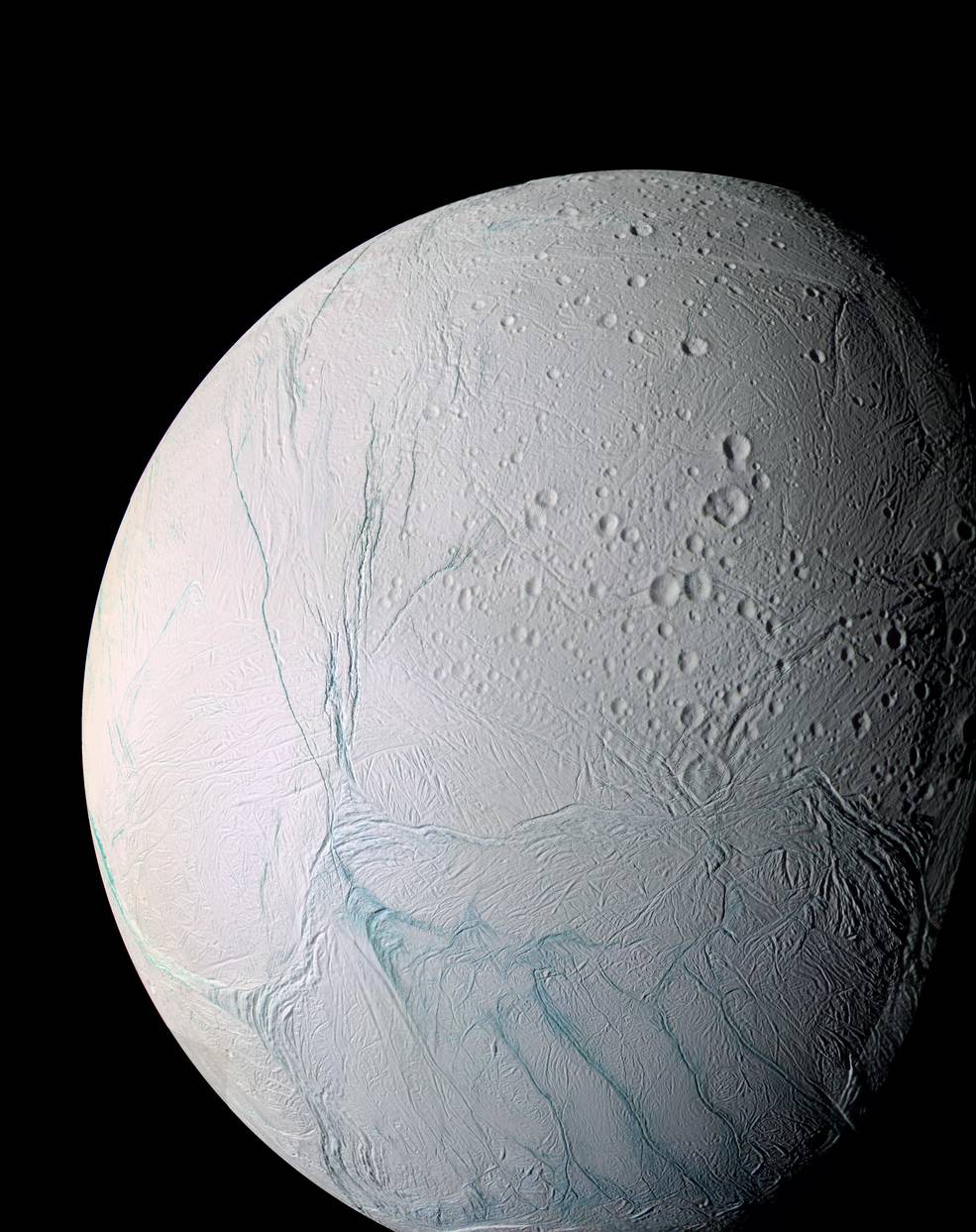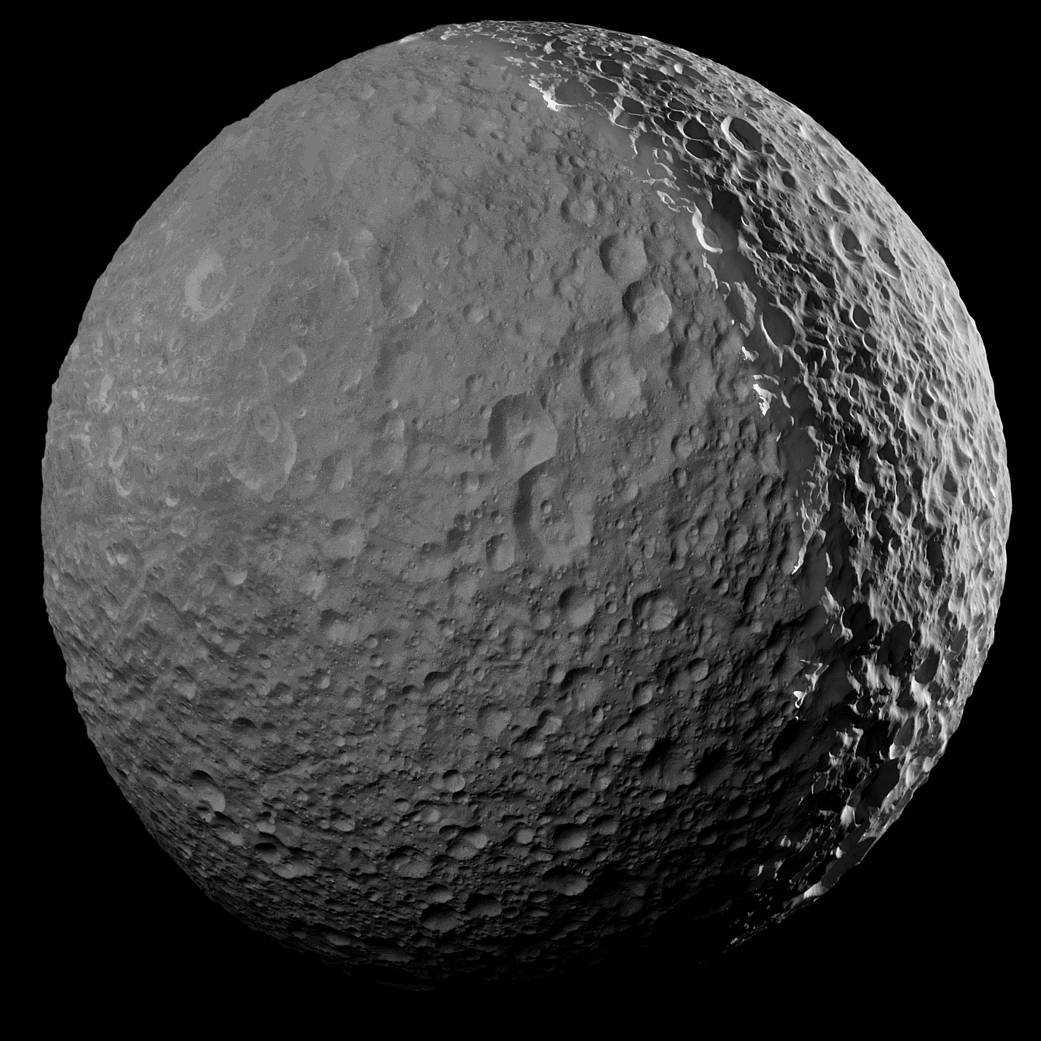Credit: NASA/JPL/Space Science Institute
訳者注:
これぞ決定版といえる土星の環の詳細画像です。
超高解像度画像(11795 × 1425)は以下のサムネイルをクリックすると別ウィンドウで表示します。
ファイルサイズが大きい(約2MB)のでお使いの環境やブラウザによって読み込み・表示に時間がかかります。
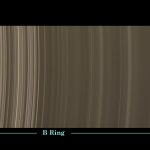
オリジナル記事:Expanse of Ice
A scan across Saturn’s incredible halo of ice rings yields a study in precision and order.
氷でできた信じられないような光の環である土星の環を観測することで、その秩序だった構造の精密な研究とが可能になります。
This natural color mosaic was acquired by the Cassini spacecraft as it soared 39 degrees above the unilluminated side of the rings.
この自然色の合成画像は、カッシーニ探査機が土星の環の明るい側から反対側で39度上から撮影したものです。
Major named gaps are labeled at the top. The main rings themselves, along with the F ring, are labeled at the bottom, along with their inner and outer boundaries.
画像の上部に名前を付けられている重要な間隙の名称を表示しています。主要な環については内側と外側の境界とともに、F環に至るまで、画像の下側に名称を表示しています。
This mosaic was constructed from narrow-angle camera images taken immediately after the wide-angle camera mosaic On the Final Frontier. Radial features can be seen in the rings that are about ten times smaller than in the wide-angle view. This scan is rotated 180 degrees compared to On the Final Frontier in order to present the rings with distance from Saturn increasing left to right.
この合成画像は、ファイナルフロンティアの広角カメラで撮影直後に撮影された狭角カメラ画像から合成したものです。広角カメラの画像と比較すると約10分の1の土星の環の画像です。この画像は、左から右に向かって土星からの距離が離れていく環を表示していてファイナルフロンティアの画像と比較すると180度回転表示しています。
The view combines 45 images — 15 separate sets of red, green and blue images — taken over the course of about 2.5 hours, as Cassini scanned across the rings.
カッシーニが土星の環を撮影した際、約2.5時間に渡って撮影した45枚の画像(15枚の赤、緑、青の画像の別々のセット)で合成しています。
The images in this view were obtained on May 9, 2007, at a distance of approximately 1.1 million kilometers (700,000 miles) from Saturn. Image scale in the radial (horizontal) direction is about 6 kilometers (4 miles) per pixel.
この画像は、2007年5月9日に土星から約110万キロ(70万マイル)の距離から撮影したものです。土星の環の広がる方向(水平方向)の画像解像度は、1ピクセルあたり約6キロメートル(4マイル)です。
The Cassini-Huygens mission is a cooperative project of NASA, the European Space Agency and the Italian Space Agency. The Jet Propulsion Laboratory, a division of the California Institute of Technology in Pasadena, manages the mission for NASA’s Science Mission Directorate, Washington, D.C. The Cassini orbiter and its two onboard cameras were designed, developed and assembled at JPL. The imaging operations center is based at the Space Science Institute in Boulder, Colo.
Credit: NASA/JPL/Space Science Institute
蛇足:
拡大表示を印刷して部屋の壁に飾って眺めています。


